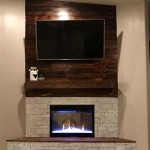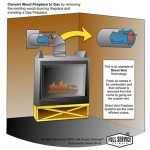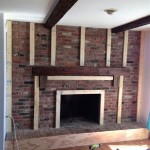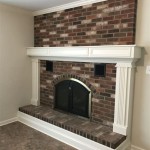Toddler Fireplace Safety: A Comprehensive Guide for Parents
Fireplaces offer warmth and ambiance to a home, particularly during colder months. However, for families with toddlers, fireplaces present significant safety hazards. Toddlers, with their natural curiosity and limited understanding of danger, are especially vulnerable to burns, falls, and other fireplace-related injuries. This article provides a comprehensive guide to toddler fireplace safety, outlining key considerations and preventative measures for creating a safer home environment.
The inherent dangers of fireplaces stem from several factors. The high temperatures produced by burning wood or gas pose a direct burn risk. Exposed flames, hot surfaces, and emitted embers can cause severe injuries to curious toddlers who might touch or get too close to the fireplace. Moreover, the fireplace area often contains hard surfaces, such as brick or stone, which can lead to injuries from falls. Furthermore, the aesthetics of a fireplace, particularly the dancing flames, can be highly captivating for young children, drawing them closer and increasing the likelihood of an accident.
Effective toddler fireplace safety requires a multi-faceted approach encompassing preventative measures, parental supervision, and child education. Implementing these strategies can significantly reduce the risk of fireplace-related accidents and create a safer living space for young children.
Establishing a Safety Barrier
A physical barrier is paramount in preventing toddlers from accessing the fireplace and its immediate surroundings. This barrier should be sturdy, reliable, and specifically designed for fireplace safety. Several types of barriers are available, each offering different levels of protection and convenience.
Fireplace Screens:
These are typically made of metal mesh and are placed directly in front of the fireplace opening. While they can block embers and prevent direct contact with the flames, many standard fireplace screens can become hot to the touch, posing a burn risk. Therefore, when using a fireplace screen, it is essential to ensure that the screen is positioned far enough away from the fireplace opening to prevent it from overheating or to select a screen with a heat-resistant coating.Fireplace Gates:
These are freestanding enclosures that surround the entire fireplace area. They provide a more comprehensive barrier, keeping toddlers at a safe distance from the fireplace itself, as well as from any potentially hazardous accessories, such as pokers or tongs. Fireplace gates are typically made of metal or sturdy plastic and can be adjusted to fit various fireplace sizes. When selecting a fireplace gate, it is crucial to ensure that it is securely anchored to the wall or floor to prevent it from being easily moved or toppled over.Custom-Built Barriers:
Depending on the fireplace design and room layout, a custom-built barrier might be the most effective solution. These barriers can be constructed from wood, metal, or other durable materials and can be tailored to fit the specific dimensions of the fireplace area. A custom-built barrier offers the highest level of protection and allows for seamless integration with the home's aesthetic.Regardless of the type of barrier chosen, it is essential to ensure that it meets safety standards and is properly installed. The barrier should be high enough to prevent toddlers from climbing over it and strong enough to withstand their attempts to push or pull it down. Regular inspection and maintenance of the barrier are also necessary to ensure its continued effectiveness.
Implementing Safety Practices During Fireplace Use
Even with a physical barrier in place, it is crucial to implement safe practices whenever the fireplace is in use. These practices minimize the risk of accidents and further enhance toddler safety.
Constant Supervision:
Never leave a toddler unattended near a lit fireplace, even if a barrier is present. Toddlers are quick and unpredictable, and they can find ways to circumvent safety measures in a matter of seconds. Constant supervision is the most effective way to prevent accidents and ensure their safety.Maintaining a Safe Distance:
Encourage toddlers to stay a safe distance away from the fireplace, even when it is not in use. This helps to establish a sense of respect for the fireplace and teaches them the importance of respecting its boundaries. Create a designated play area away from the fireplace to minimize potential interactions.Removing Hazardous Objects:
Keep all flammable materials, such as blankets, pillows, and toys, away from the fireplace. These items can easily ignite if they come into contact with sparks or embers. Store firewood in a safe location away from the fireplace and out of reach of toddlers.Proper Fireplace Maintenance:
Regular fireplace maintenance is crucial for safe operation. Have the fireplace inspected and cleaned annually by a qualified professional to ensure that it is in good working order. This includes checking for any cracks or damage to the firebox, chimney, and flue.Using a Fire Extinguisher:
Keep a fire extinguisher readily accessible near the fireplace and ensure that all adults in the household know how to use it. In the event of a fire, a fire extinguisher can help to quickly extinguish the flames and prevent further damage.Carbon Monoxide Detectors:
Install carbon monoxide detectors in your home, particularly near bedrooms, to detect the presence of this odorless, colorless gas. Carbon monoxide is a byproduct of burning fuel and can be deadly if inhaled in high concentrations. Test the detectors regularly to ensure that they are functioning properly and replace the batteries as needed.When the fireplace is not in use, ensure that the damper is closed to prevent drafts and conserve energy. This also helps to prevent small animals from entering the chimney.
Educating Children About Fire Safety
While physical barriers and safety practices are essential, educating children about fire safety is equally important. Teaching them about the dangers of fire and how to respond in an emergency can empower them to make safe choices and protect themselves.
Age-Appropriate Instruction:
Tailor the information to the child's age and understanding. For toddlers, focus on simple concepts, such as "Fire is hot" and "Don't touch the fire." Use visual aids, such as pictures and videos, to help them understand the dangers of fire.Teaching the "Stop, Drop, and Roll" Technique:
Teach children the "stop, drop, and roll" technique in case their clothes catch on fire. Practice this technique regularly to ensure that they remember it in an emergency. Emphasize the importance of covering their face with their hands while rolling to protect it from burns.Identifying Safe Escape Routes:
Familiarize children with the safe escape routes from the house in case of a fire. Practice fire drills regularly to ensure that they know how to evacuate quickly and safely. Establish a designated meeting place outside the house where everyone can gather after evacuating.Understanding the Sound of Smoke Detectors:
Teach children what the sound of a smoke detector means and what to do when they hear it. Emphasize the importance of evacuating the house immediately and going to the designated meeting place.Never Playing with Fire:
Reinforce the message that fire is not a toy and should never be played with. Keep matches and lighters out of reach of children and teach them that these items are tools for adults to use, not toys for children to play with.Reinforce these safety lessons regularly and make fire safety a consistent topic of conversation in the home. Consistent education will instill good habits and empower children to make safe choices around fire.
Beyond the immediate fireplace area, it's also important to consider other potential fire hazards in the home. Keep flammable liquids, such as gasoline and kerosene, stored in tightly sealed containers away from heat sources. Regularly check electrical cords and appliances for damage and repair or replace them as needed. Install smoke detectors on every level of the home and test them monthly to ensure that they are functioning properly.
By implementing these comprehensive safety measures – establishing physical barriers, implementing safe practices during fireplace use, and educating children about fire safety – families can significantly reduce the risk of fireplace-related accidents and create a safer home environment for toddlers. Proactive safety measures are an investment in the well-being of young children, ensuring they can explore their environment safely and without undue risk from fireplace hazards.

Childproofing A Fireplace Doctor Flue Se Michigan Nw Ohio

How To Childproof Your Fireplace Baby Proof

Babysafetyfoam Com Baby Proofing Fireplace Hearth Guard Bumper Pad Safety Cushion Cover Protection

5 Tips To Child Proof Your Fireplace

Wood Stove Gas Hearth Gate G3111g4301 G4311 Friendly Fires

Childproof Pet Proof Your Fireplace Safety Burlington Wi

Babyproof Your Hearth And Fireplace With These Simple Tips Tricks

How To Baby Proof Fireplace Important Checklist

Keep Your Family Safe How To Prevent Fireplace Fires

Pin On Family Focus Blog
Related Posts








